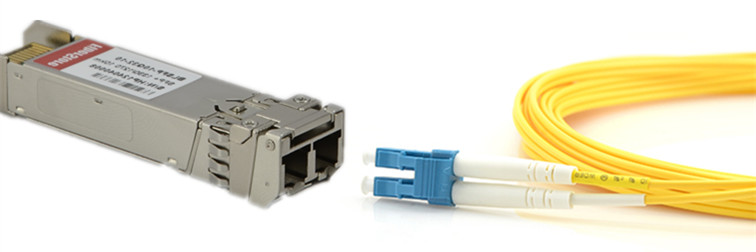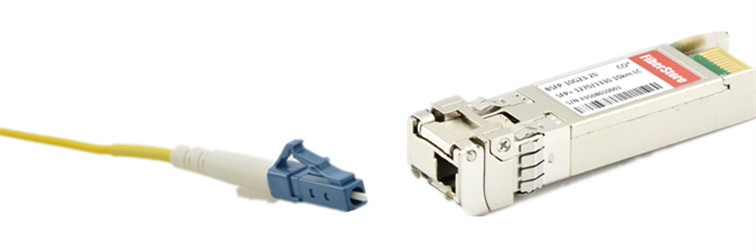10GBASE-T has been available as an add-in card in servers, switches and network interface cards (NICs) since 2008, and it has been widely adopted since 2012. It is highly praised for its advantages which include lower cost than 10G fiber, cost-efficiency of using existing MAC (Media Access Control), easier migration from 1GBASE-T to 10GBASE-T, and the ability to deliver PoE (Power over Ethernet). Does that mean we should all turn to use 10GBASE-T now? And what are the 10GBASE-T cable requirements? Every application differs, let’s see some specific cases in short-reach applications.
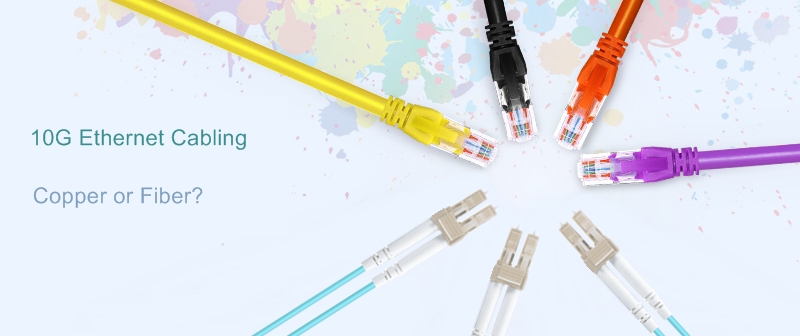
When building a 10G network, the link can be either copper or fiber. If using 10GBASE-T cable, the places are required to be in the Data Center or Horizontal areas (in building, including wiring closet). But it is not suited for Vertical (riser links) applications within building, or campus & metro applications.
Case 1: Connecting a switch with only SFP+ ports to a switch with only 10GBASE-T ports.
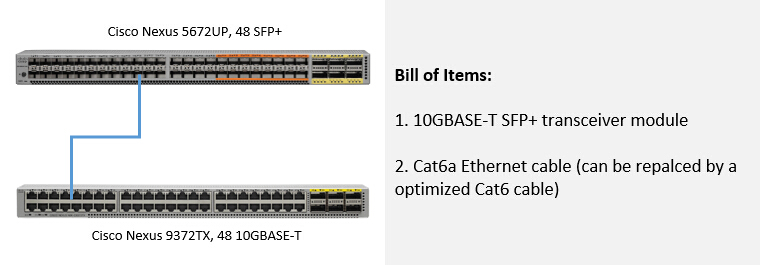
When the distance of these two switches are less than 30 m, which is the max. link distance for 10GBASE-T copper SFP+ module, the desired connection for them can be made by using a 10GBASE-T module and a Cat6a cable. It’s the simplest solution for this case.
Case 2: Connecting two switches with only 10GBASE-T ports.
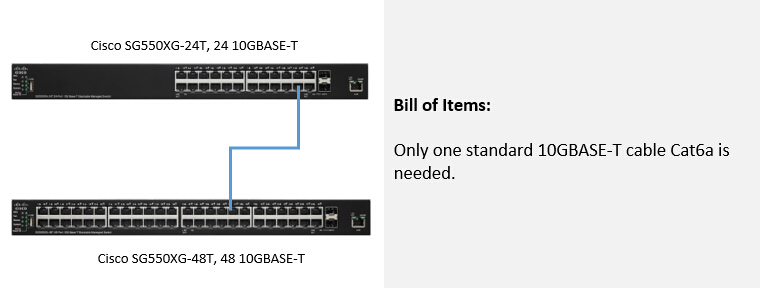
Connecting two switches with all 10GBASE-T ports are as simple as placing the plug into its mating socket. One Cat6a Ethernet cable is born for such a connection and that is why it is called the standard 10GBASE-T cable. By using a Cat6a cable for 10GBASE-T, it can reach up to 100m distance.
Case 3: Connecting two switches with only SFP+ ports.
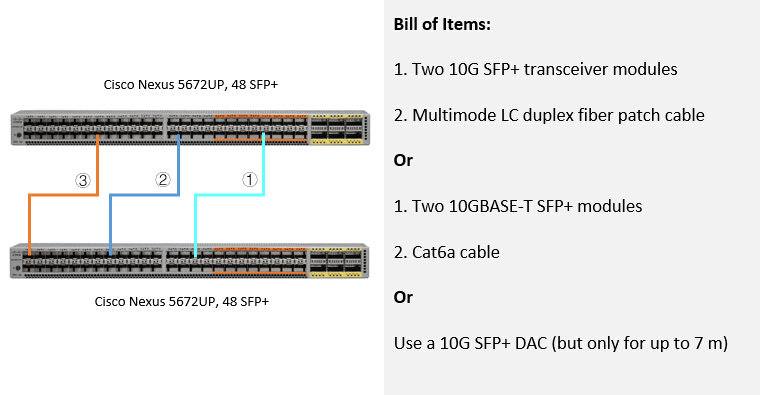
There are three choices for connecting two complete SFP+ switches. For distances between 30 m to 400 m, it is recommended to get two 10GBASE-SR SFP+ modules for each switch and connect them with a OM3/4 LC duplex multimode fiber patch cable. The second is to use two 10GBASE-T SFP+ modules and Cat6a cable. If the link is as short as 7 m, it is suggested to use a low cost 10G SFP+ direct attach copper (DAC) cable.
Case 4: Connecting switches with both SFP+ and 10GBASE-T ports.
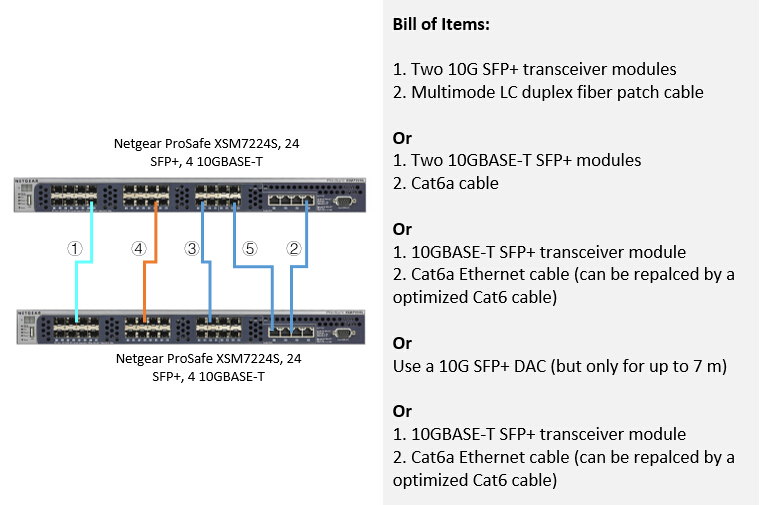
When the two switches both have SFP+ and 10GBASE-T ports, you will be free to use methods from Case 1 to Case 3 above. But in my experience, it would be better to use the 10GBASE-T copper ports first, and save the SFP+ ports for possible future connections to an optical network for longer transmission distance.
10GBASE-T is taking its way to being more extensively used on network gears without a doubt, and cost for deploying 10GBASE-T equipment will be lowered with its wide spreading. Know the requirements for 10GBASE-T cabling is necessary for correctly choosing between 10GBASE-T or 10G SFP+ in practical usage. After all, cost-efficiency is very important in large-scale deployment.
Related Article: 10GBASE-T vs SFP+ vs SFP+ Cable, Which to Choose for 10GbE Network?

